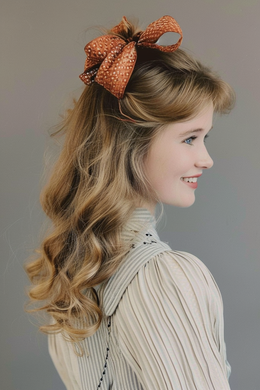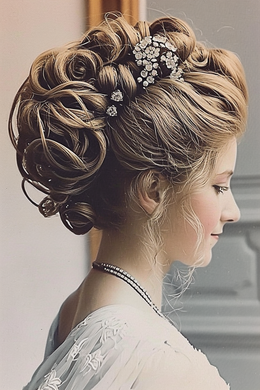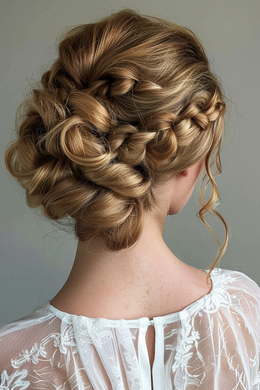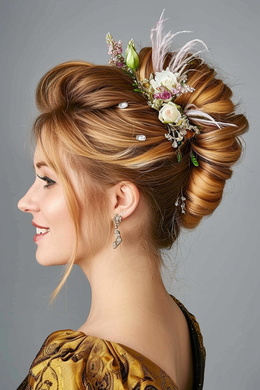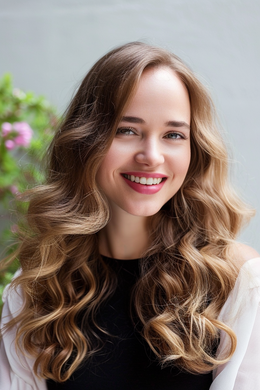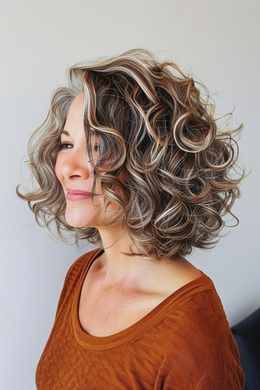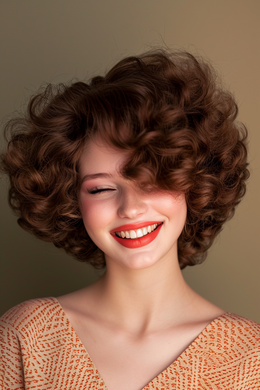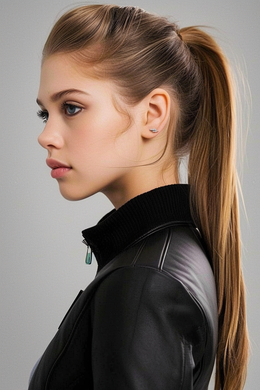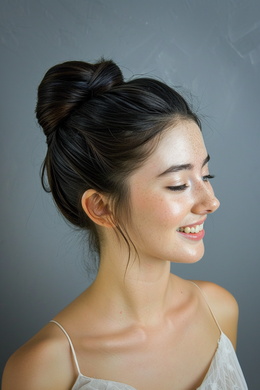Hairstyles 1910 for Women: 24+ Elegant Looks of the Belle Époque
Immerse yourself in an era of sophistication and try enchanting looks like the Psyche Knot or the Pompadour hairstyle. Let yourself be inspired by elegant updos and shimmering accessories from the 1910s.
Table of content
Greek Style
Immerse yourself in the enchanting world of Greek style, which adorned women's heads with refined elegance in the 1910s. Inspired by the graceful appearance of antiquity, the Greek hairstyle introduced beautifully draped hair, artfully twisted into low buns, or laid in gentle waves around the head into modernity. Paired with jewel-adorned hairbands and tiaras, embellished with pearls or gold-toned accents, you felt like a goddess from times long past. Perfect for you if you want to present your hair not only stylishly but also healthily, as gentle waves and loose buns preserve your hair's structure and let it shine in its natural glow.
Long Curls
Long curls were a true highlight even at the beginning of the 20th century. They symbolized femininity and elegance. To create long curls, hair was often wrapped overnight in papillotes or strips of fabric. Homemade hair waters and oils provided extra hold, giving the curls shine and smoothness. Remember: Regular hair care is essential to keep your mane shining brightly today. Curls, in particular, require an additional dose of moisture to maintain their elasticity and bounce. Opt for gentle shampoos and rich conditioners that give your hair exactly what it needs. With the right preparation and care, long, flowing curls are not a dream of the past, but also a beautiful tribute to bygone eras that you can proudly wear.
Hair Care and Protection Techniques of the 1910s
In the 1910s, it was essential for women not only to style their hair but also to take care of it. This was because healthy, shiny hair was the foundation for any enchanting hairstyle of the era. Hair care usually began with a careful wash, which naturally did not occur as frequently as it does today. For this purpose, women often used soaps made specifically for hair before modern shampoos became common. To strengthen the hair and give it shine, women resorted to natural oils like olive oil or argan oil, which they massaged into the ends of their hair. To protect hair from mechanical damage when pinning up or braiding, fabric strips or papillotes were often used. Caution was also advised when using heat - for instance, with Marcel styling. Hair oils and pomades served not only for styling but also as a kind of heat protection, as Marcel irons were directly heated and could damage the hair. Those who wanted to protect their tresses often tied them in a silk scarf at night to prevent breakage. Fashionable hats and hairnets were equally popular for protecting against dust and dirt during the day, adding an extra measure of security to intricate hairstyles.
Tools and Instruments for Styling Historical Hairstyles
The ladies of the 1910s used a variety of tools and instruments to shape their hair according to the styles of the time. Besides the previously mentioned Marcel irons, curling irons and waving irons were part of the standard repertoire for styling. Conventional combs and brushes in various sizes and shapes helped to detangle the hair and prepare it for styling. An essential tool for hairstyles like the pompadour was hair padding. These were made from hair—sometimes even horsehair or other fibers—and helped create volume on the top of the head. Various clips, pins, and needles were used to secure the hairstyles and hold them in place. To tease the hair and give it hold, a teasing comb was indispensable. Such tools required a deft touch and practice in handling. Additionally, hairnets and hair covers were often used to protect and set the hairstyle, especially when it came to fine curls or intricately arranged waves.
Hair Accessories and Accents of the 1910s
Hair accessories played a significant role in the 1910s to give fashionable hairstyles that special something. Headbands, often wrapped in luxurious fabrics and adorned with embroidery or beads, were popular accessories to accentuate the hairline and provide hairstyles with a festive character. Tiaras and diadems studded with rhinestones or imitation gemstones lent ladies a touch of royal elegance at evening events. Hair combs—both practical and decorative—were also featured in hairstyles. They were often artfully designed and served to support and enhance the styling. Ribbons or bows woven into hairstyles offered additional opportunities to emphasize style and color. Lastly, flowers—real or artificial—were a popular natural adornment, highlighting feminine grace and often used on warmer days. These additional sections round out the existing article by providing readers with deeper insights into the hair care practices, styling tools used, and the use of hair accessories in the 1910s.















